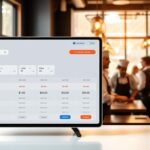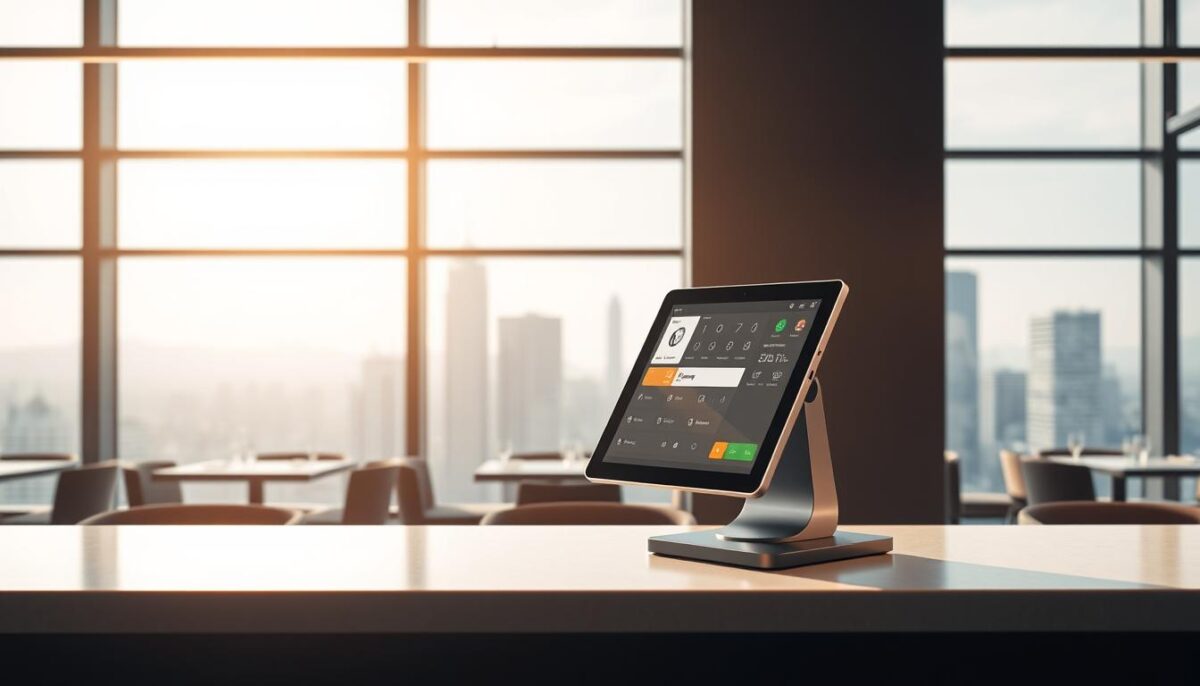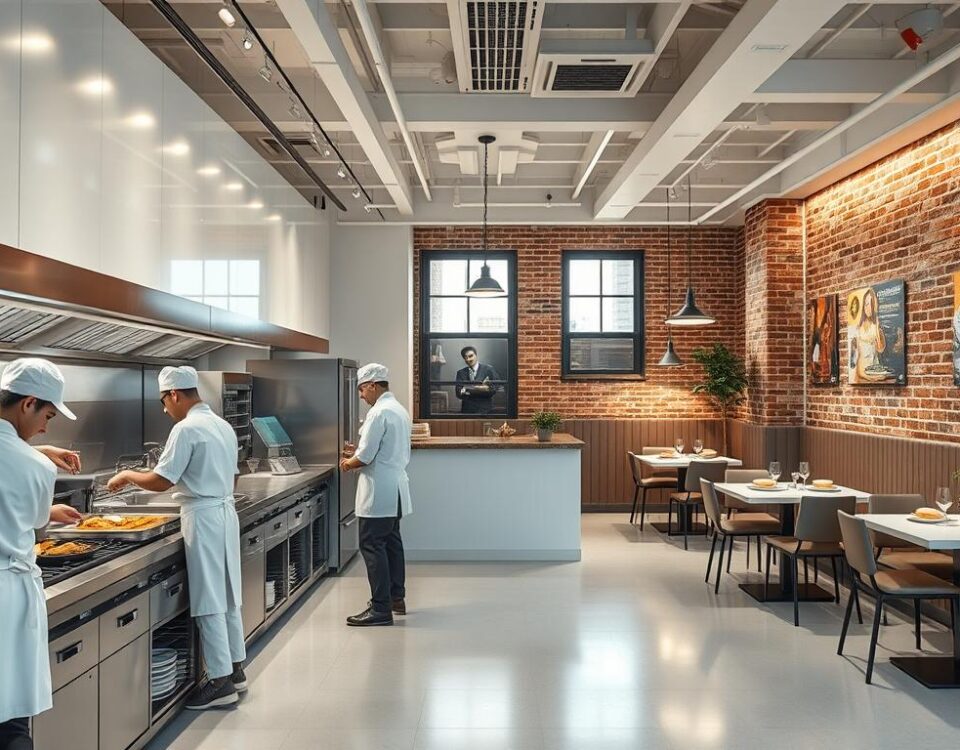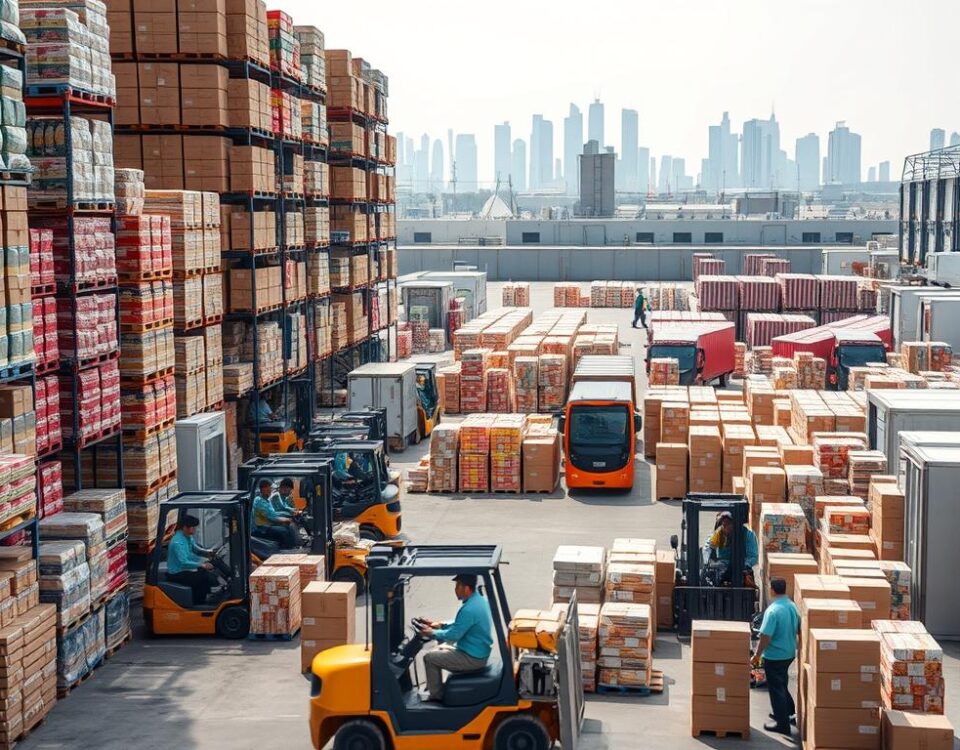
Ultimate Guide to Restaurant Scheduling Software Pricing and ROI
July 30, 2025
Ultimate Comparison Guide: Price, Service, and Reliability of Restaurant Suppliers
July 31, 2025I still remember the chaos that ensued when I decided to upgrade my restaurant’s POS system. The process was more complicated than I anticipated, and I encountered several unexpected challenges along the way.
Did you know that nearly 60% of restaurants experience operational disruptions when transitioning to a new POS system? This staggering statistic highlights the importance of being prepared for the switch.
As I navigated the transition, I realized that many restaurateurs focus solely on the hardware when upgrading their POS systems, overlooking critical aspects that can significantly impact their business.
What are the common pitfalls that can be avoided with proper planning? I’ll reveal the essential insights to help you navigate your POS transition more smoothly.
Key Takeaways
- Understand the full scope of migration to minimize downtime.
- Proper planning is crucial to avoid operational disruptions.
- Focusing solely on hardware can lead to overlooked critical aspects.
- A new POS system can significantly impact your business operations.
- Being prepared for the switch is essential for a smooth transition.
The Hidden Challenges of POS System Migration
When I decided to migrate my restaurant’s POS system, I was unaware of the challenges that lay ahead. Initially, I thought it was just about replacing the old hardware with new equipment. However, I soon realized that the process was much more complex.
Why I Decided to Switch My Restaurant’s POS System
My old POS system was limiting my business growth. It lacked advanced features that modern restaurant operations require, such as efficient inventory management and enhanced customer service capabilities. I found that my legacy POS system was functioning merely as an electronic cash register, which was not sufficient for my business needs.
Beyond Hardware: Understanding the Full Scope of Migration
The migration process affects every aspect of restaurant operations. It’s not just about new hardware; it’s about transforming the way you manage your business. From staff workflows to customer satisfaction, a new POS system touches all areas of your restaurant.
The True Cost of Postponing a Necessary Upgrade
Postponing a POS upgrade can be costly. It’s not just about the financial costs; it’s also about the lost efficiency, missed opportunities, and decreased customer satisfaction. By delaying the upgrade, I was missing out on competitive advantages that other restaurants were enjoying with their advanced POS systems.
| Aspect | Old POS System | New POS System |
|---|---|---|
| Inventory Management | Manual and time-consuming | Automated and efficient |
| Customer Service | Limited features | Enhanced features for better customer experience |
| Staff Workflows | Inefficient processes | Streamlined processes for improved productivity |
Common Restaurant POS Switching Pitfalls to Avoid

As a restaurateur, I’ve learned that switching POS systems requires careful planning to avoid common pitfalls. The process involves more than just replacing hardware; it demands a thorough understanding of the challenges that can arise during the transition.
Data Migration Nightmares I Nearly Experienced
Moving historical data from an old POS system to a new one can be tricky. POS systems store critical data such as sales history, customer information, and inventory records. Ensuring this data is accurately transferred without loss or corruption is paramount. I nearly experienced a data migration nightmare when switching POS systems, but careful planning helped me avoid losing critical sales history and customer information.
Underestimating Staff Training Requirements
Staff training is another critical aspect often underestimated by restaurateurs. A new POS system means new interfaces and processes, which can be overwhelming for staff accustomed to the old system. Comprehensive training is essential to prevent service disruptions and employee frustration.
Integration Issues with Existing Systems
Ensuring the new POS system integrates seamlessly with existing restaurant management systems, including accounting, inventory, and reservation systems, can be a significant hurdle. I discovered that integration issues can be one of the most challenging aspects of POS migration, particularly with accounting software and inventory management tools. Testing integration capabilities before fully committing to a new system is crucial.
Unexpected Downtime During Transition
Migrating to a new POS system can lead to operational downtime, affecting the ability to serve customers efficiently. To minimize this disruption, planning for potential downtime by scheduling the transition during off-peak hours or days is essential. I minimized downtime in my restaurant by adopting this strategy.
By being aware of these common pitfalls, restaurateurs can better prepare for a smooth transition to a new POS system. Careful planning, comprehensive staff training, and thorough testing of integration capabilities are key to avoiding these challenges.
Critical Pre-Switch Planning Steps
To ensure a seamless transition to a new POS system, I need to take several critical steps before making the switch. Switching to a new POS system can be a complex process, but with careful planning, it can be a game-changer for my restaurant.

Conducting a Comprehensive Needs Assessment
Conducting a comprehensive needs assessment is the crucial first step in the POS switching process. This involves evaluating my restaurant’s specific requirements and pain points. I need to gather input from all stakeholders, including front-of-house staff, kitchen staff, and management, to ensure the new system addresses everyone’s needs.
- Evaluate current POS system limitations
- Identify required features and integrations
- Gather feedback from staff and management
Creating a Realistic Timeline for Implementation
Creating a realistic timeline for implementation helps manage expectations and ensures all necessary steps are completed without rushing the process. My timeline needs to account for unexpected delays and allow for thorough testing before going live with the new system.
Developing a Data Migration Strategy
Developing a detailed data migration strategy prevents loss of critical information and ensures business continuity throughout the transition. I need to identify which historical data is essential to preserve and which can be archived or discarded.
“A well-planned data migration strategy is crucial for a successful POS system switch.”
Budgeting for All Associated Costs
I discovered that budgeting for all associated costs goes beyond just hardware and software expenses. I need to include training time, potential downtime, and integration services in my budget to avoid financial surprises during the transition process.
By following these critical pre-switch planning steps, I can ensure a smooth transition to my new POS system and set my restaurant up for long-term success.
How to Ensure a Smooth Transition to Your New POS
A smooth transition to a new POS system is crucial for maintaining customer satisfaction and staff productivity. When I decided to switch my restaurant’s POS system, I knew that careful planning was essential to minimize disruptions.
Selecting the Right Time for Your Switch
I discovered that selecting the right time for the POS switch is crucial. I chose a slower period in my restaurant’s calendar to minimize disruption to staff and customers. This strategic timing allowed my team to adapt to the new system without feeling overwhelmed.
Running Parallel Systems During the Transition Period
Running parallel systems during the transition period was a game-changer for my restaurant. It allowed staff to gradually adapt while maintaining operational continuity. By keeping the old system running alongside the new one, we were able to identify and resolve issues before fully transitioning.
Effective Staff Training Approaches That Worked for Me
Effective staff training was critical to the successful adoption of the new POS system. I implemented hands-on practice sessions and created simple reference guides to help my team learn the new system quickly.
Testing Critical Functions Before Going Live
Testing critical functions before going live with the new POS system helped me identify and resolve potential issues before they affected customer service. This proactive approach ensured a seamless transition for our customers.
Creating Backup Plans for Potential Issues
Creating backup plans for potential issues proved invaluable when we encountered unexpected challenges during the transition. By having a contingency plan in place, we were able to address problems quickly and minimize downtime.
By following these steps and being mindful of the challenges that can arise during a POS system transition, restaurateurs can ensure a smooth and successful switch to their new POS system.
Maximizing the Benefits of Your New POS System
The transition to a cloud-based POS system has been a game-changer for my restaurant business. With the right system in place, I’ve been able to unlock numerous benefits that have transformed how I manage my operations.

Leveraging Cloud-Based Capabilities
One of the most significant advantages of my new POS system is its cloud-based capabilities. This feature has allowed me to access my restaurant’s data from anywhere, giving me unprecedented flexibility and control over my business. I can now make informed decisions on the go, without being tied to a specific location.
Utilizing Advanced Reporting and Analytics
The advanced reporting and analytics capabilities of my POS system have been invaluable. I’ve been able to identify trends, optimize menu pricing, and make data-driven decisions that have improved profitability. The insights gained from sales patterns, employee performance, and inventory usage have been particularly useful.
Implementing Customer Loyalty Programs
Implementing customer loyalty programs through my new POS system has significantly increased repeat business and average check size in my restaurant. The ability to create targeted marketing campaigns and offer personalized customer experiences has been a key factor in this success.
By leveraging the full capabilities of my cloud-based POS system, I’ve been able to enhance security, improve operational efficiency, and drive business growth. The benefits of switching to a modern POS system have been substantial, and I highly recommend it to other restaurateurs looking to stay competitive.
Conclusion
Upgrading to a modern POS system is not just about replacing old technology; it’s about transforming your restaurant’s ability to serve customers efficiently. Throughout this article, I’ve shared my personal experience with switching POS systems, highlighting both the challenges and the rewards of this significant operational change.
The right POS solution can transform restaurant operations, enhancing everything from inventory management to customer service and team efficiency. While there is inevitably a learning curve when implementing a new POS system, the long-term benefits for your business far outweigh the temporary challenges.
To ensure a smooth transition, it’s crucial to select the right POS provider that offers comprehensive support, training, and a solution that aligns with your specific restaurant needs. The security advantages of modern cloud-based POS systems provide peace of mind that your business and customer data are protected.
By taking your time in the selection and implementation process, you can avoid costly mistakes and unnecessary disruptions. With proper planning and execution, your new POS can become a powerful tool for growing your restaurant business and staying competitive in the evolving food service industry.
FAQ
What are the most common issues I might face when migrating my data to a new POS system?
Data migration can be a complex process, and common issues include data loss, formatting errors, and compatibility problems. To minimize these risks, I recommend working closely with my POS provider to develop a comprehensive data migration strategy.
How can I ensure my staff is properly trained on the new POS system?
Effective staff training is crucial to a smooth transition. I suggest providing hands-on training, leveraging online resources, and scheduling regular check-ins to address any questions or concerns my team may have.
What are the benefits of using a cloud-based POS system?
Cloud-based POS systems offer greater flexibility, scalability, and security. They also enable me to access my data from anywhere, at any time, and provide automatic software updates and backups.
How can I minimize downtime during the transition to my new POS system?
To minimize downtime, I plan to run parallel systems during the transition period, conduct thorough testing before going live, and have a backup plan in place in case of any issues.
Can I integrate my new POS system with my existing accounting software?
Many POS systems offer integration capabilities with accounting software. I ensure that my POS provider supports integration with my existing accounting tools to streamline my operations.
How can I leverage my new POS system to improve customer loyalty?
My new POS system enables me to implement customer loyalty programs, track customer data, and offer personalized promotions. By leveraging these capabilities, I can build stronger relationships with my customers and drive repeat business.
What kind of support can I expect from my POS provider during the transition process?
I expect my POS provider to offer comprehensive support, including training, technical assistance, and troubleshooting. A reliable provider will help ensure a smooth transition and minimize any disruptions to my business.



